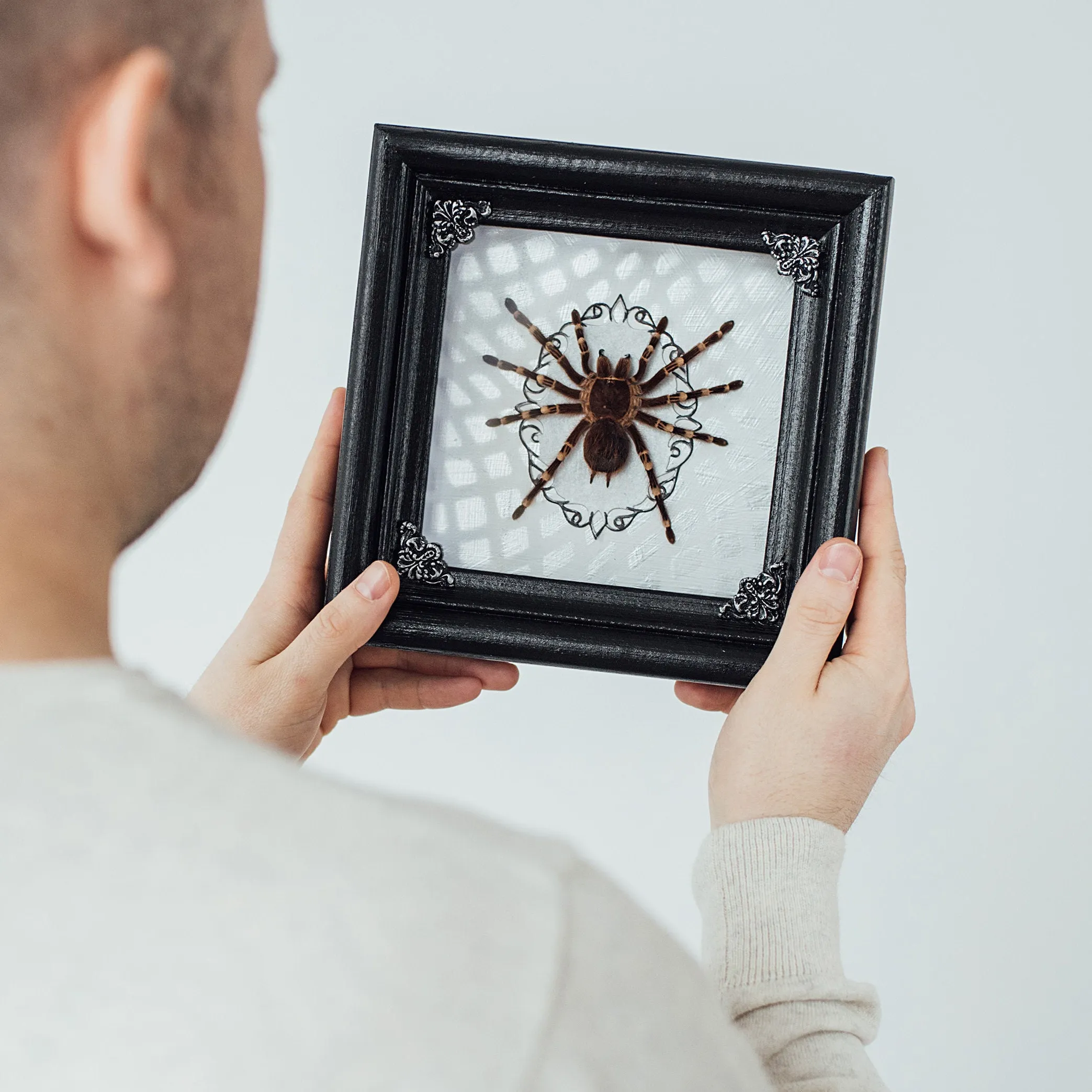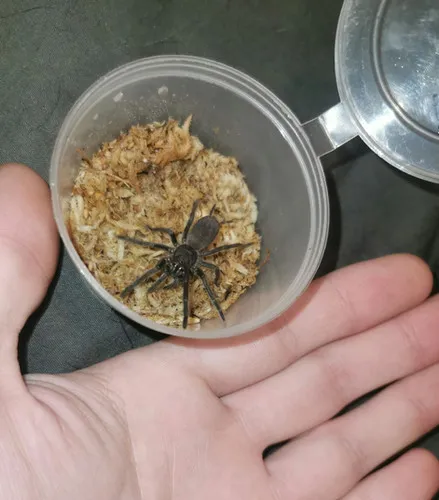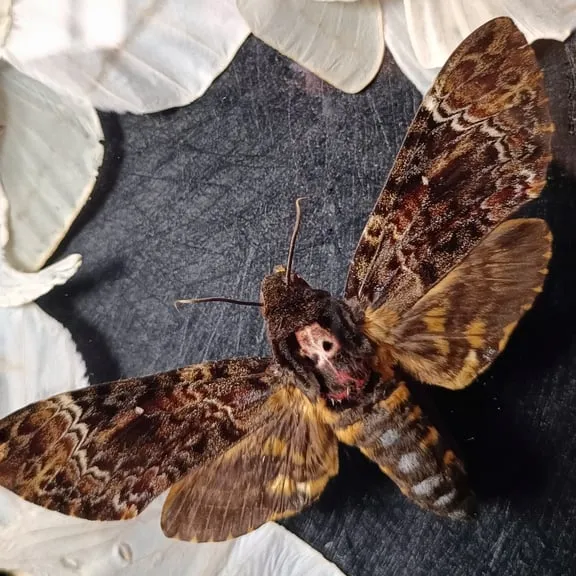What is a Tarantula Box Set
A tarantula box set is a pre-packaged kit designed to provide everything you need to get started with keeping a tarantula as a pet. These sets are especially useful for beginners because they bundle essential items that might otherwise require extensive research and individual purchasing. The sets typically include an enclosure, substrate, water dish, and sometimes even the tarantula itself. They are convenient, often cost-effective, and simplify the initial setup process. Think of it as a starter pack that makes the transition into tarantula ownership much smoother and more manageable. They eliminate the guesswork, ensuring you have the basic necessities right from the beginning, creating a safe and comfortable environment for your new pet.
What is included in a tarantula box set
The contents of a tarantula box set can vary depending on the manufacturer and the specific package, but there are some common items you can expect to find. These typically include the enclosure itself, which is a crucial component for housing your tarantula. Additionally, you’ll usually find a substrate, which is the bedding material that lines the bottom of the enclosure and provides a comfortable environment for the tarantula. A water dish is also a standard inclusion, ensuring your tarantula has access to fresh water at all times. You might also get decorative items such as fake plants or hides, which help enrich the enclosure and give the tarantula a place to feel secure. Some box sets may even include the tarantula itself, particularly if they’re geared towards beginners, although this is less common.
Essential Equipment

Essential equipment goes beyond just the box set basics. The tarantula’s well-being depends on the right setup. Understanding the importance of the enclosure, substrate, and environmental conditions is fundamental to responsible tarantula ownership. The enclosure is your tarantula’s home, so it must be appropriately sized and constructed to prevent escape while providing adequate ventilation. The substrate plays a critical role in maintaining humidity, providing a natural environment, and allowing the tarantula to burrow if it’s a species that does so. Additionally, maintaining the correct temperature and humidity levels is essential for your tarantula’s health and molting cycles. Proper equipment contributes to a safe and healthy environment, ensuring your tarantula thrives.
Enclosure setup
Setting up the enclosure properly is paramount for your tarantula’s well-being. The enclosure size should be appropriate for the species and size of your tarantula. It should provide ample space for movement, without being so large that the tarantula feels exposed. Ensure the enclosure is escape-proof, with a secure lid and no gaps. The enclosure should also have adequate ventilation to prevent the build-up of harmful gases and to maintain optimal humidity levels. Placement is also crucial; avoid direct sunlight and drafts. Your tarantula’s habitat is essential to its long-term health and happiness.
Substrate
The substrate is the bedding material in the enclosure. It serves multiple purposes including absorbing waste, maintaining humidity levels, and allowing the tarantula to burrow. The ideal substrate depends on the specific tarantula species, with options varying from coconut fiber and peat moss to vermiculite and potting soil mixtures. Coconut fiber is a popular choice because it holds moisture well and is relatively easy to find. Ensure the substrate is clean, free of pesticides, and replaced regularly to prevent the build-up of mold and bacteria. Proper substrate management directly impacts the health of your tarantula.
Water and Humidity

Water and humidity are crucial aspects of tarantula care. Tarantulas require access to fresh water at all times, typically provided through a shallow water dish. Regularly refill the dish and clean it to prevent bacterial growth. Humidity levels vary based on the species, but in general, tarantulas thrive with humidity. Proper humidity is essential for their molting cycles, allowing them to shed their exoskeletons successfully. Monitor humidity levels using a hygrometer and adjust the enclosure’s ventilation and substrate moisture to maintain the ideal range. Misting the enclosure or adding a water dish can help regulate humidity.
Temperature
Temperature is another vital element of tarantula care. Most tarantulas thrive in temperatures between 70-85°F (21-29°C). Using a thermometer to monitor the temperature is crucial. Avoid placing the enclosure in direct sunlight or near heat sources, as this could cause overheating. For certain species, you might need to use a heat mat or ceramic heat emitter, but always regulate the temperature with a thermostat to avoid burns. Stable temperatures are essential for the tarantula’s metabolism, activity levels, and overall health. Remember that fluctuating temperatures can be stressful for your tarantula and may affect its appetite and behaviour.
Food and Feeding
Providing the right food and feeding your tarantula appropriately is fundamental to its health and well-being. Tarantulas are carnivores, and their diet typically consists of insects. The size of the prey should be appropriate for the size of your tarantula – generally, the prey should be no larger than the tarantula’s abdomen. Crickets, mealworms, and roaches are common and readily available food choices. Ensure the insects are gut-loaded with nutritious food before feeding them to your tarantula, which improves the nutritional value of the meal. Proper feeding practices contribute to the tarantula’s growth, energy levels, and longevity, ensuring it lives a healthy life.
What to feed tarantulas

The most common foods for tarantulas are insects. Crickets are a staple food and are easy to obtain. Mealworms are another option, although they have a tougher exoskeleton. Roaches, such as Dubia roaches, are a highly nutritious option and are often preferred by tarantulas. Before feeding, dust the insects with a calcium and vitamin supplement to enhance their nutritional value. Avoid feeding your tarantula wild-caught insects, as these may carry parasites or pesticides. Research the specific dietary needs of your species, but a varied diet of appropriately sized insects usually keeps them happy.
Feeding frequency
Feeding frequency varies based on the tarantula’s age and species. Spiderlings, younger tarantulas, typically need to be fed more often than adults. Spiderlings can be fed every other day or several times a week. Sub-adults can be fed once or twice a week. Adult tarantulas generally require feeding once or twice a week or even less frequently. Adjust the feeding schedule based on the tarantula’s appetite and behavior; a tarantula that refuses food might be in pre-molt or experiencing stress. Remove any uneaten prey within 24 hours to prevent them from bothering the tarantula.
Tarantula Species Selection
Choosing the right tarantula species for your experience level is essential for both your safety and the tarantula’s well-being. Some species are docile and easy to care for, while others are more defensive and require more specialized knowledge. Consider factors such as temperament, size, venom potency, and specific environmental requirements. Do thorough research on the specific species you’re considering before making a purchase. There are several fantastic beginner species that provide a great introduction to tarantula keeping without overwhelming new keepers. Matching the tarantula’s needs with your ability to provide them leads to a much more rewarding and less stressful experience.
Beginner-Friendly Tarantula Species

Several tarantula species are known for their docile temperament and ease of care, making them excellent choices for beginners. The Chilean Rose Hair (Grammostola rosea) is a popular choice, known for its gentle nature and hardiness. Mexican Red Knee (Brachypelma hamorii) tarantulas are also relatively docile and have striking coloration. These species are generally less prone to defensive behaviors and can tolerate some minor fluctuations in their environment. They also have a more forgiving nature regarding feeding and humidity. The Brazilian Black (Grammostola pulchra) is another good option, known for its calm disposition and beautiful appearance. Starting with a beginner-friendly species ensures a positive and enjoyable experience for you.
Intermediate Tarantula Species
For those with some experience in tarantula keeping, there are several intermediate species that offer a bit more of a challenge. The Cobalt Blue (Cyriopagopus lividus) is a striking species with a vibrant blue coloration, but it is known to be fast and can be defensive. The Greenbottle Blue (Chromatopelma cyaneopubescens) is another species with beautiful coloration that can be rewarding to care for. They require slightly more precise humidity and ventilation control. These species offer a deeper experience for the experienced owner, expanding their skills and knowledge. While generally not as easygoing as beginner species, they present a fun opportunity for learning more advanced care techniques.
Advanced Tarantula Species
Advanced tarantula species are best left to experienced keepers with a solid understanding of tarantula care. These species often have more specific environmental needs, can be more defensive, and sometimes possess more potent venom. The King Baboon (Pelinobius muticus) is a fast, aggressive species that requires a lot of space and specialized housing. The Poecilotheria genus, known as the Ornamental tarantulas, have potent venom and can be quite unpredictable. These tarantulas demand a high level of care, understanding, and respect. Advanced keepers should have comprehensive experience and understand the potential risks associated with these species before considering them as pets.
Box Set: Choosing the Right One

Selecting the right tarantula box set is a vital part of ensuring a positive experience. Not all box sets are created equal, and the quality of components can significantly impact the well-being of your tarantula. Before making a purchase, do your research on the various options available, considering factors such as the enclosure’s size and materials, the substrate type, and the quality of any included decorations. A good box set offers convenience and value, but it should also provide a safe and suitable habitat for your tarantula. Ensure you match the set to the species you plan to get to ensure you get the right kind of environment.
Research and Reputation
Before purchasing a tarantula box set, research the manufacturer and the seller. Read reviews and testimonials to gauge their reputation and customer satisfaction. Look for companies with a proven track record of providing quality products and excellent customer service. Reputable sellers will be knowledgeable about tarantula care and be able to provide helpful information and support. Check whether the box set has proper ventilation and is made from materials that do not pose any risk of toxicity for the tarantula. By choosing a reputable seller, you can increase your chances of receiving a high-quality box set that meets the needs of your new pet.
Customer Reviews
Customer reviews are a valuable source of information when choosing a tarantula box set. Read through the reviews to gain insights into the experiences of other buyers. Look for feedback on the quality of the enclosure, substrate, and other included items. Pay attention to any complaints about the seller’s service, such as delays in shipping or issues with damaged products. Reviews also give you insight into how easy it is to assemble and use the box set. Remember that while a few negative reviews are inevitable, a pattern of consistently negative feedback is a red flag.
Price and Value

Consider the price and value of the tarantula box set. While cost is a factor, don’t solely base your decision on the lowest price. Evaluate the quality of the components and what is included in the set to determine its overall value. A higher-priced box set with better-quality materials and more comprehensive accessories might be a better investment in the long run. Compare the prices of individual components to the price of the box set to assess its cost-effectiveness. Box sets are usually cost-effective compared to purchasing individual pieces. Make sure the box set offers a good value for the investment.
Setting Up Your Tarantula Box Set
Setting up your tarantula box set properly is the first step in creating a suitable habitat for your new pet. Follow the instructions provided with the box set, but also familiarize yourself with basic tarantula care principles. This will ensure a safe and comfortable environment for your tarantula. Proper setup involves preparing the enclosure, introducing the substrate, adding decorations, and making sure the environment meets the species-specific requirements. Carefully setting up the habitat is vital to the long-term health and happiness of your tarantula.
Setting up the enclosure
When setting up the enclosure, start by ensuring it is clean and free of any debris or residues. Add the substrate to the enclosure to a depth appropriate for the tarantula species. Different species require different substrates and depths. For example, burrowing species need deeper substrate. Ensure there is a water dish of a proper size and place it in a secure location where the tarantula can easily access it. Add any decorative items, such as hides, branches, or artificial plants, creating a naturalistic environment that provides hiding places for the tarantula. Once you are done, make sure everything is secure to avoid any risks.
Introducing the Tarantula

When introducing your tarantula to its new enclosure, handle the tarantula gently and carefully. Try to avoid handling the tarantula unnecessarily, as this can stress the animal. If you purchased the tarantula separately, it is best to introduce it to its enclosure as soon as possible, which minimizes the stress of transportation. Open the enclosure and gently coax the tarantula into its new home, allowing it to explore and settle in at its own pace. Make sure all parts of the enclosure are safe for the tarantula. Provide it with a place to hide so it can feel secure.
Maintaining Your Tarantula Box Set
Maintaining your tarantula box set is an ongoing process that requires regular care and attention. This includes regular cleaning, monitoring humidity and temperature levels, and providing proper food and water. Consistent maintenance is crucial for creating a healthy and stimulating environment for your tarantula. Monitoring the health and well-being of your tarantula is equally important. The maintenance schedule should be adjusted based on your species and experience, but it should always provide a healthy environment for your tarantula. Regular maintenance will contribute to the longevity and well-being of your pet tarantula.
Cleaning and Maintenance
Cleaning and maintenance should be a routine part of your tarantula care regimen. Regularly spot-clean the enclosure, removing any uneaten food, molts, or waste. The frequency of cleaning will depend on the species and the size of the enclosure, but a good rule of thumb is to spot clean every week. Complete enclosure cleanings, where you remove and replace the substrate, should be done less frequently, usually every 6 to 12 months, depending on the species and the buildup of waste. During the cleaning process, thoroughly inspect the enclosure and all its components for any signs of damage or wear.
Feeding and Watering Schedule
Establish a regular feeding and watering schedule to ensure your tarantula remains healthy. Feed your tarantula according to its age and species-specific needs. Remove any uneaten prey within 24 hours to prevent them from bothering the tarantula. Always provide fresh water in a shallow dish, and replenish it as needed. Monitor your tarantula’s feeding habits and adjust the feeding schedule as needed. Also, check the tarantula’s abdomen. A tarantula that consistently refuses food or has a very small abdomen might be close to molting, so adjust the schedule as necessary. Always make sure the water is clean and fresh.
Health and Wellbeing
The health and well-being of your tarantula are paramount, and paying close attention to your tarantula’s appearance and behavior is crucial. Tarantulas are generally hardy creatures, but they can still experience health issues. Learn to recognize the common signs of illness or stress. Also, a healthy tarantula will be alert, active, and have a good appetite. It should be able to move around in its enclosure without any difficulty. A healthy tarantula will also molt regularly, shedding its exoskeleton to allow for growth.
Common Health Issues
Some common health issues to watch out for include mites, fungal infections, and injuries. Mites are tiny parasites that can infest the tarantula and its enclosure. Fungal infections can arise from poor hygiene and excessive humidity. Injuries can occur due to falls or being bitten by prey. If you suspect your tarantula has a health issue, it’s essential to identify the cause and take appropriate action. Isolate the affected tarantula, clean the enclosure, and seek advice from a veterinarian or experienced tarantula keeper if necessary. Quick and decisive action leads to a better recovery.
Signs of a Healthy Tarantula
Recognizing the signs of a healthy tarantula is crucial for ensuring its long-term well-being. A healthy tarantula will have a good appetite and be active. It should be able to move around in its enclosure without any difficulty. It’s vital to be able to recognize any signs of health issues, such as loss of appetite, lethargy, or changes in behavior. A healthy tarantula will also molt regularly, shedding its exoskeleton to allow for growth. Molting is a normal process and is a sign that your tarantula is thriving. By paying close attention to your tarantula’s behavior and appearance, you can quickly identify any potential problems and take steps to address them.
